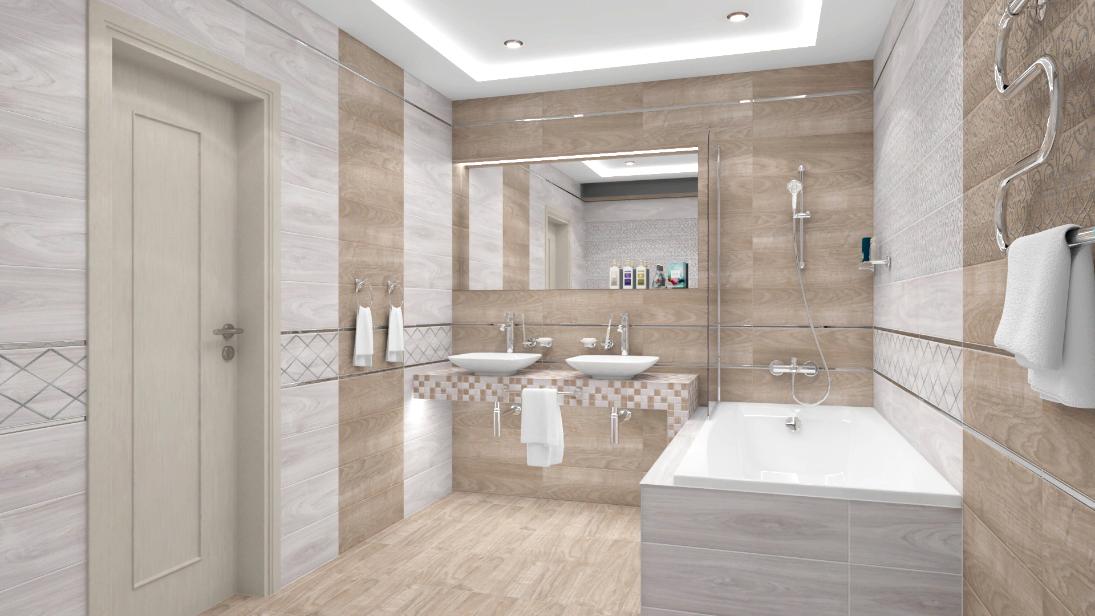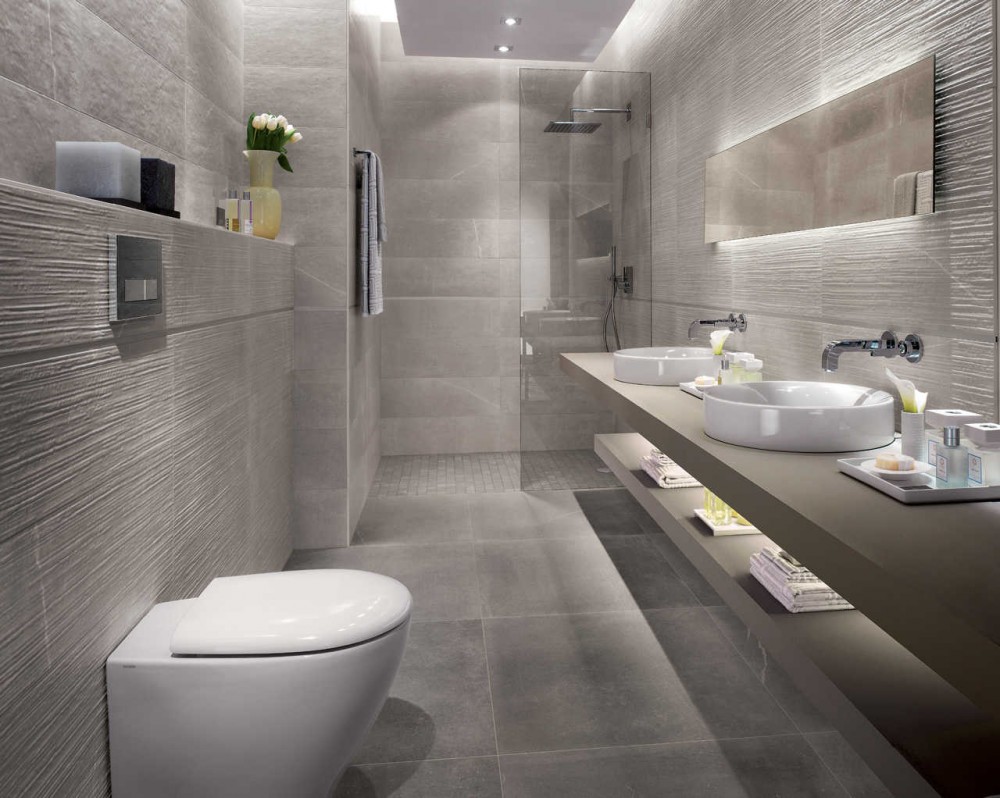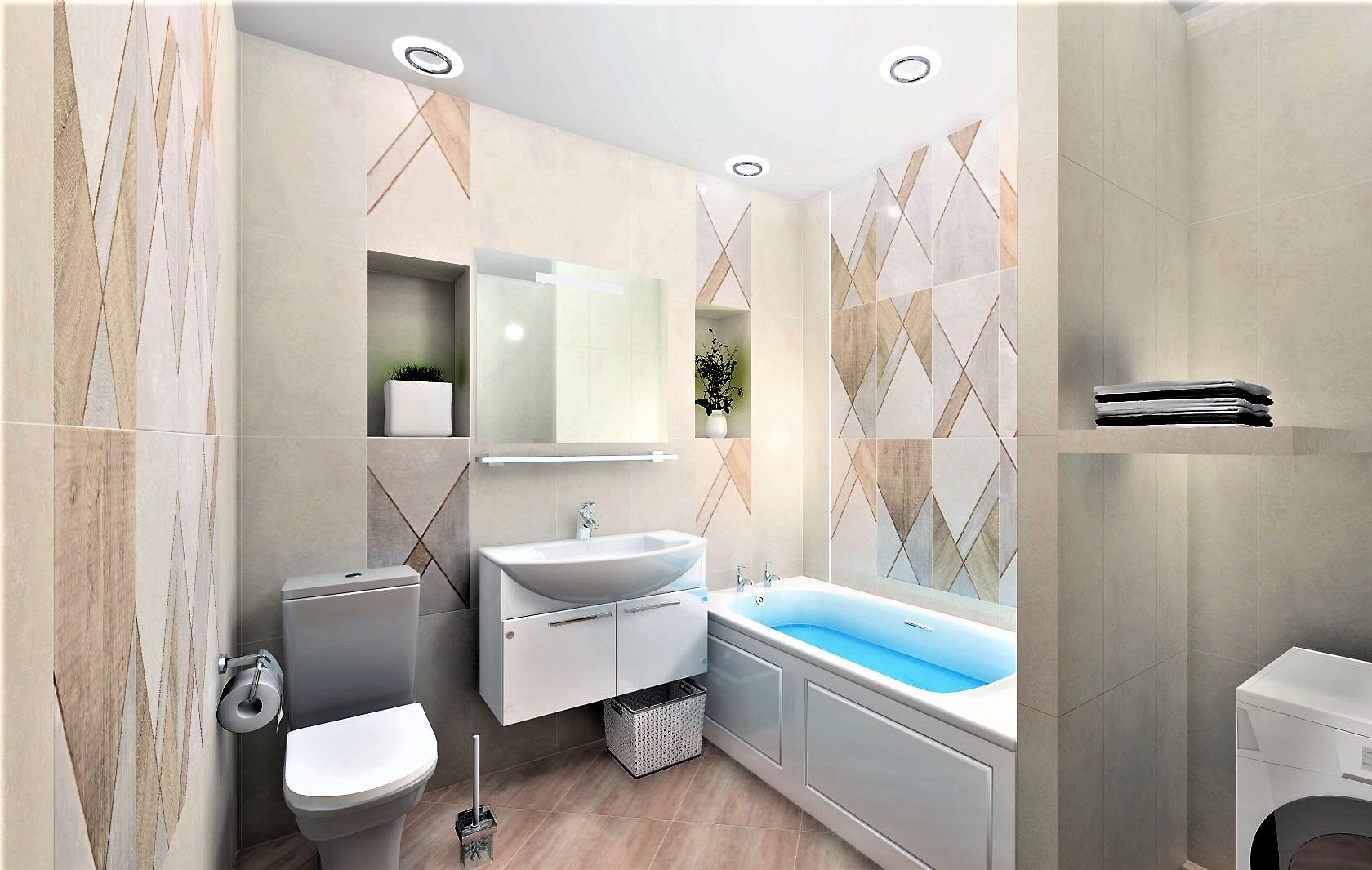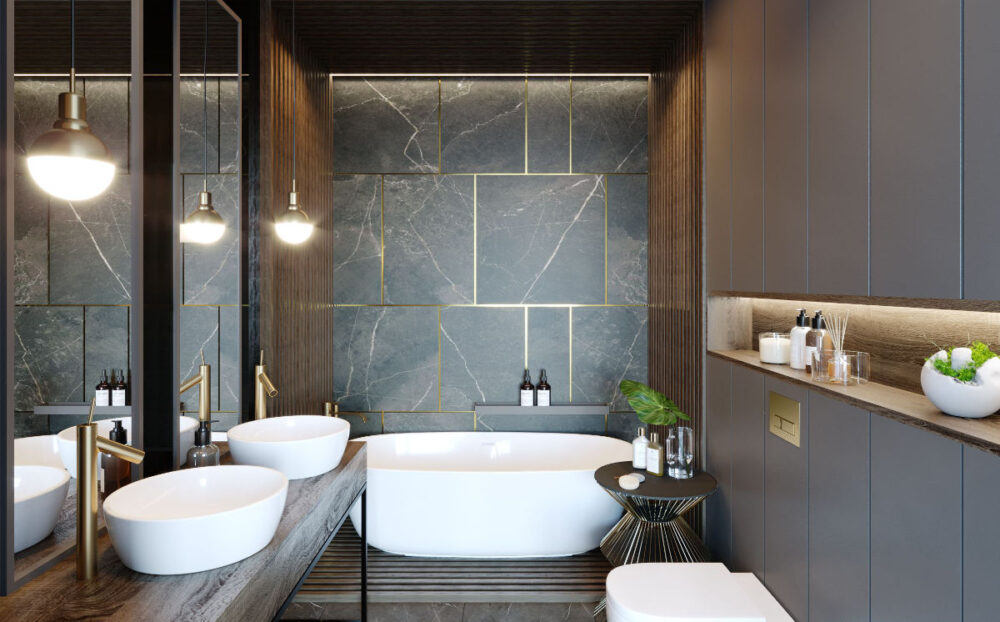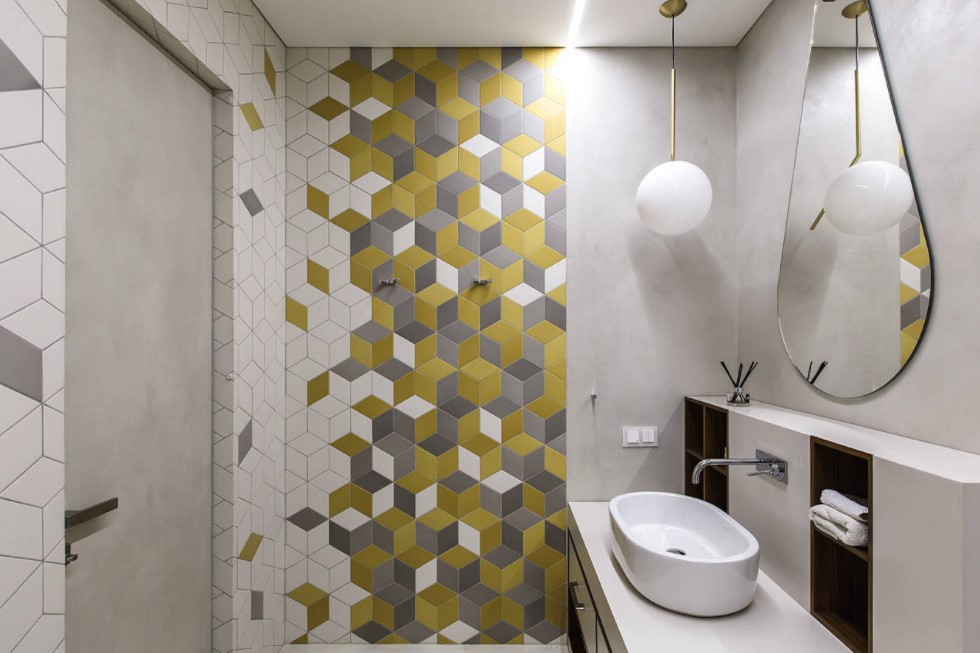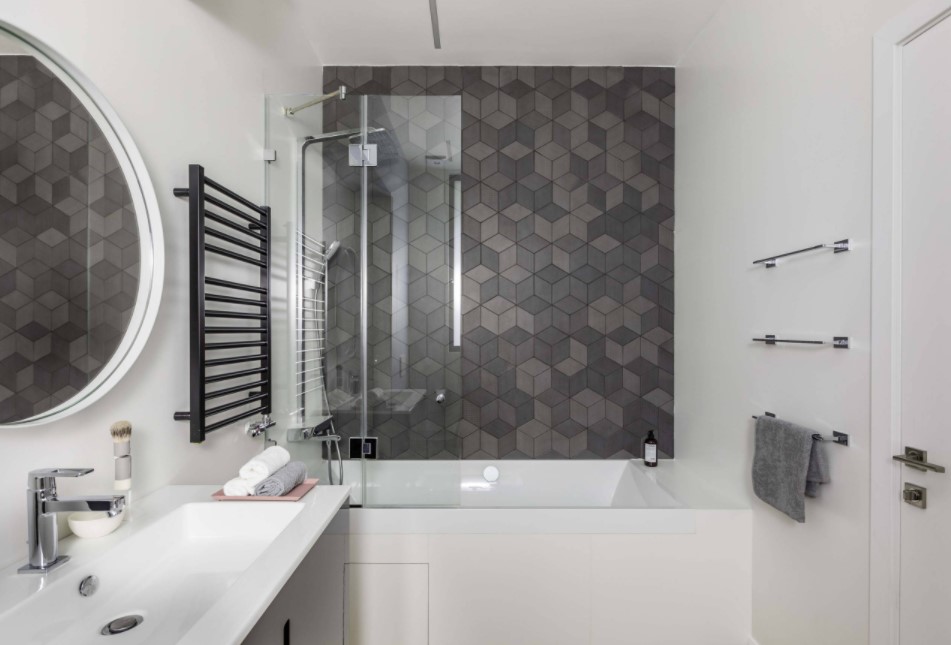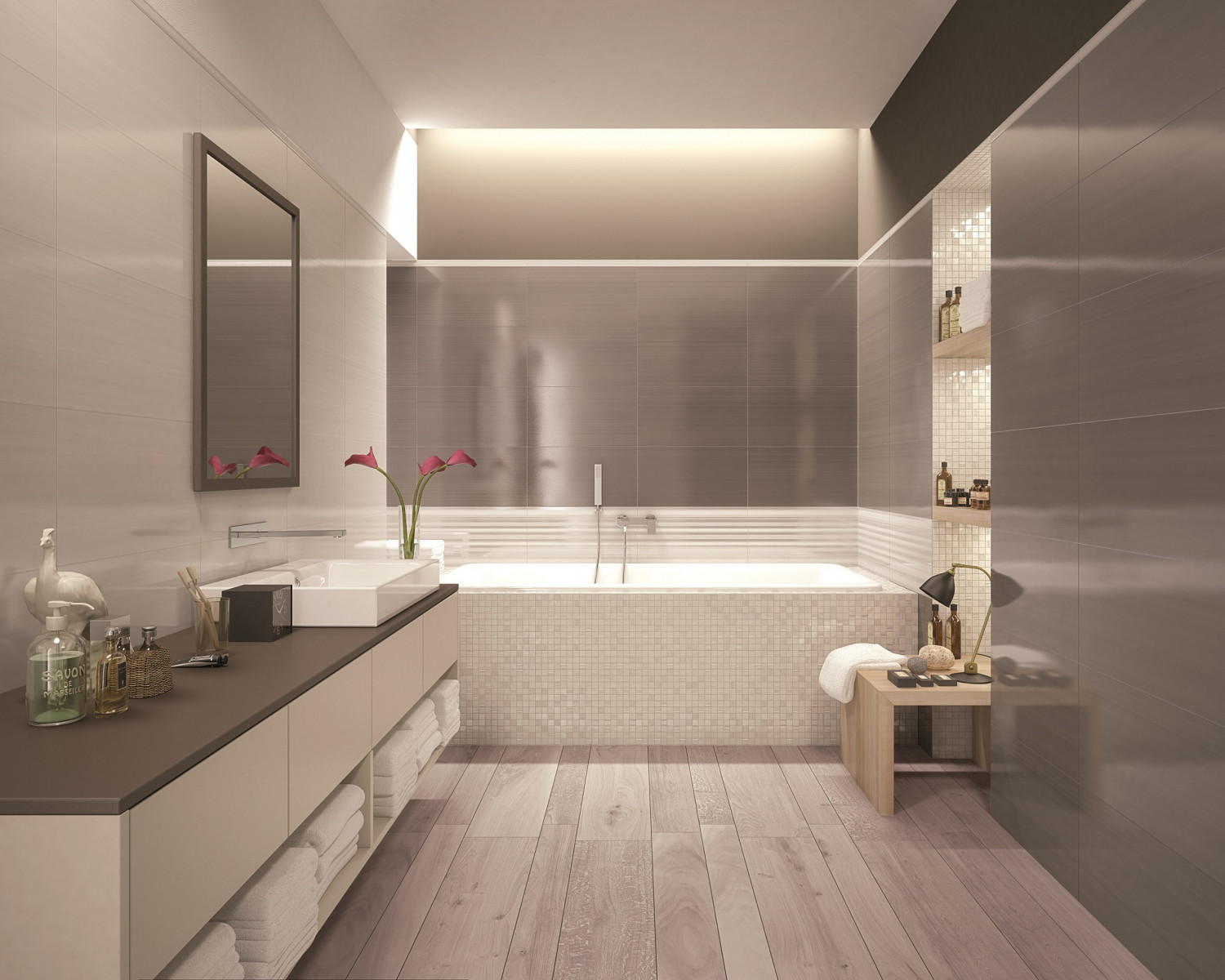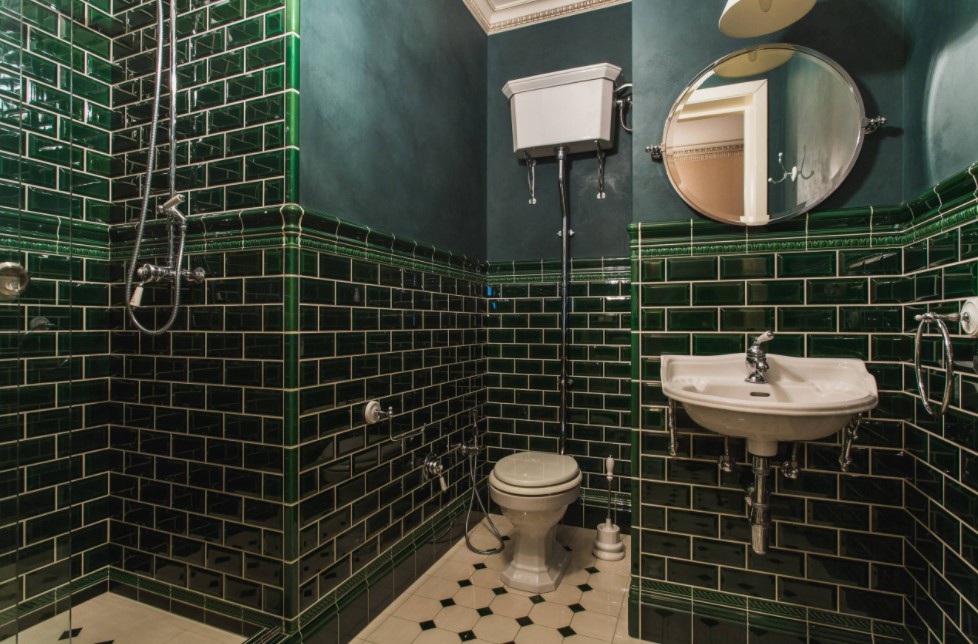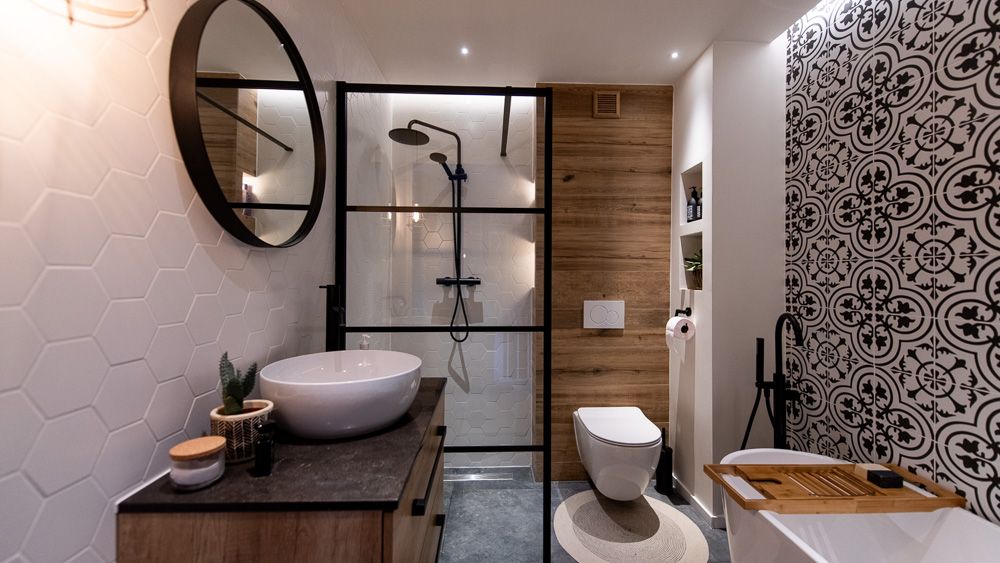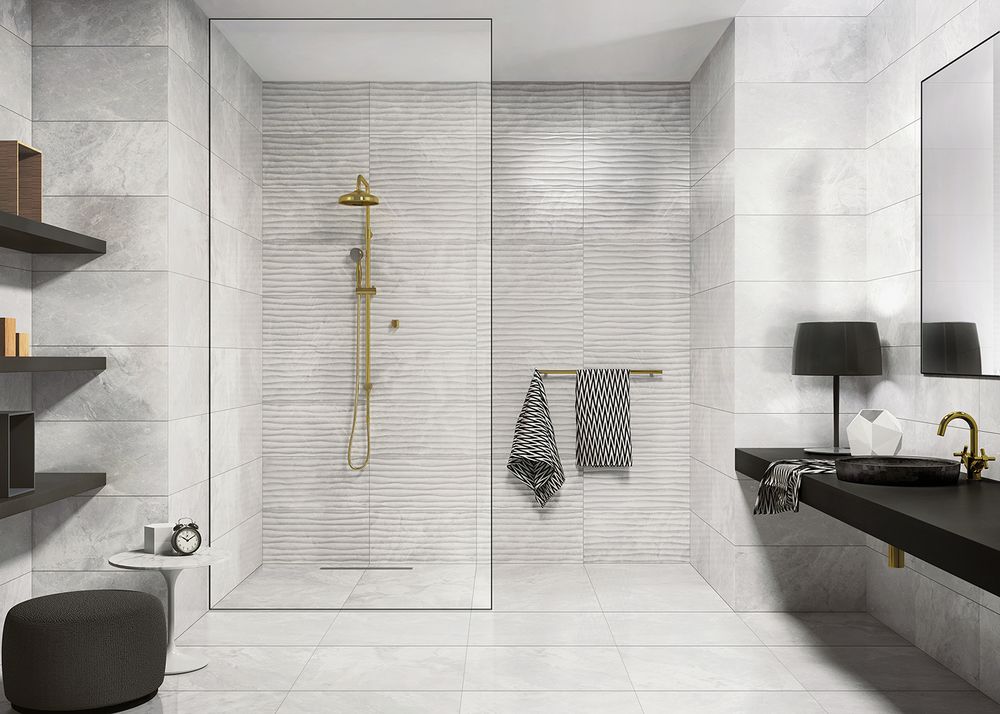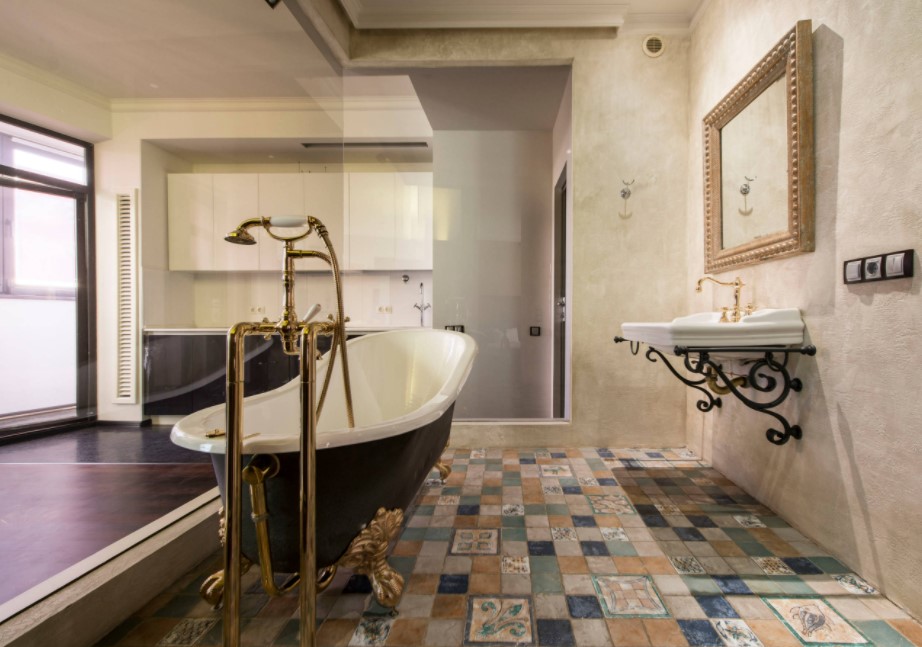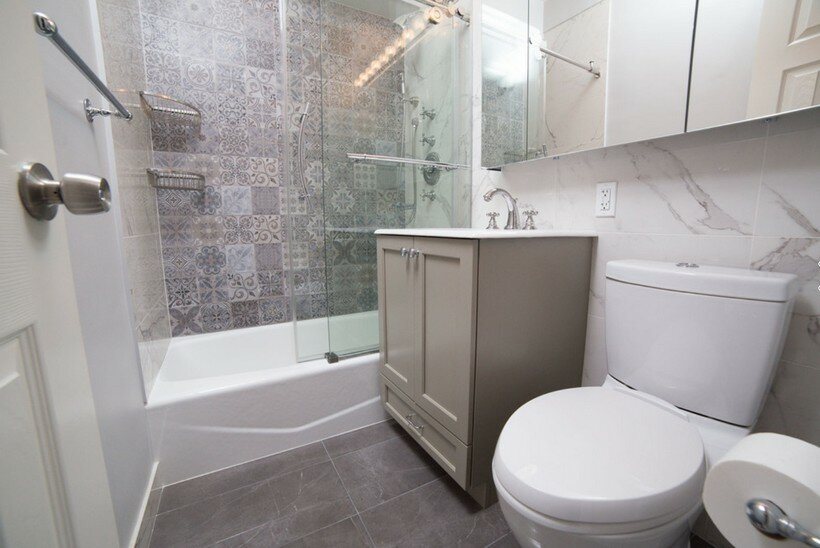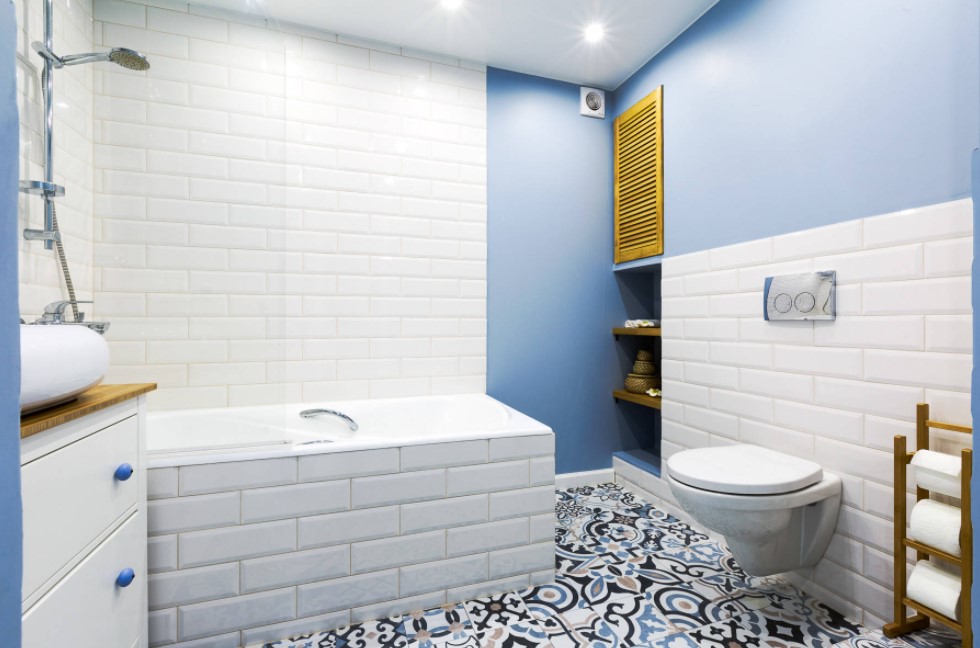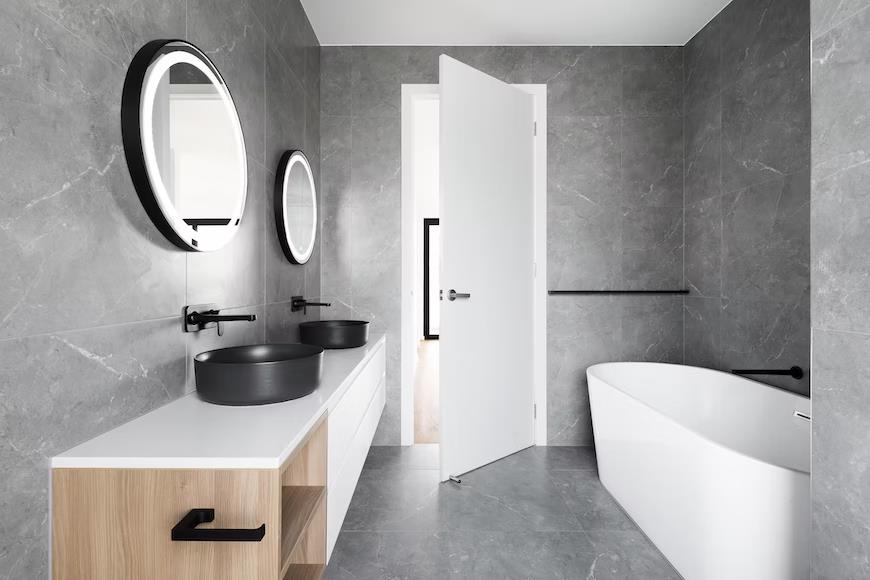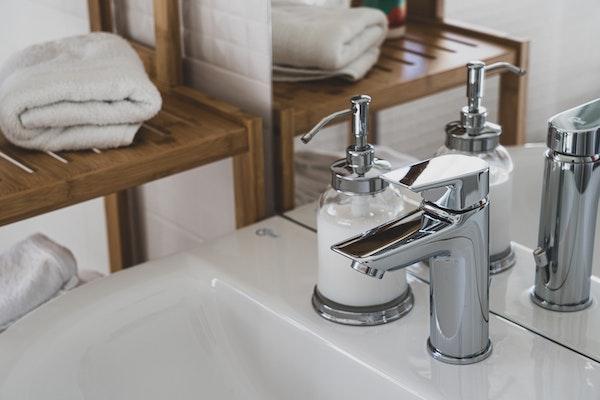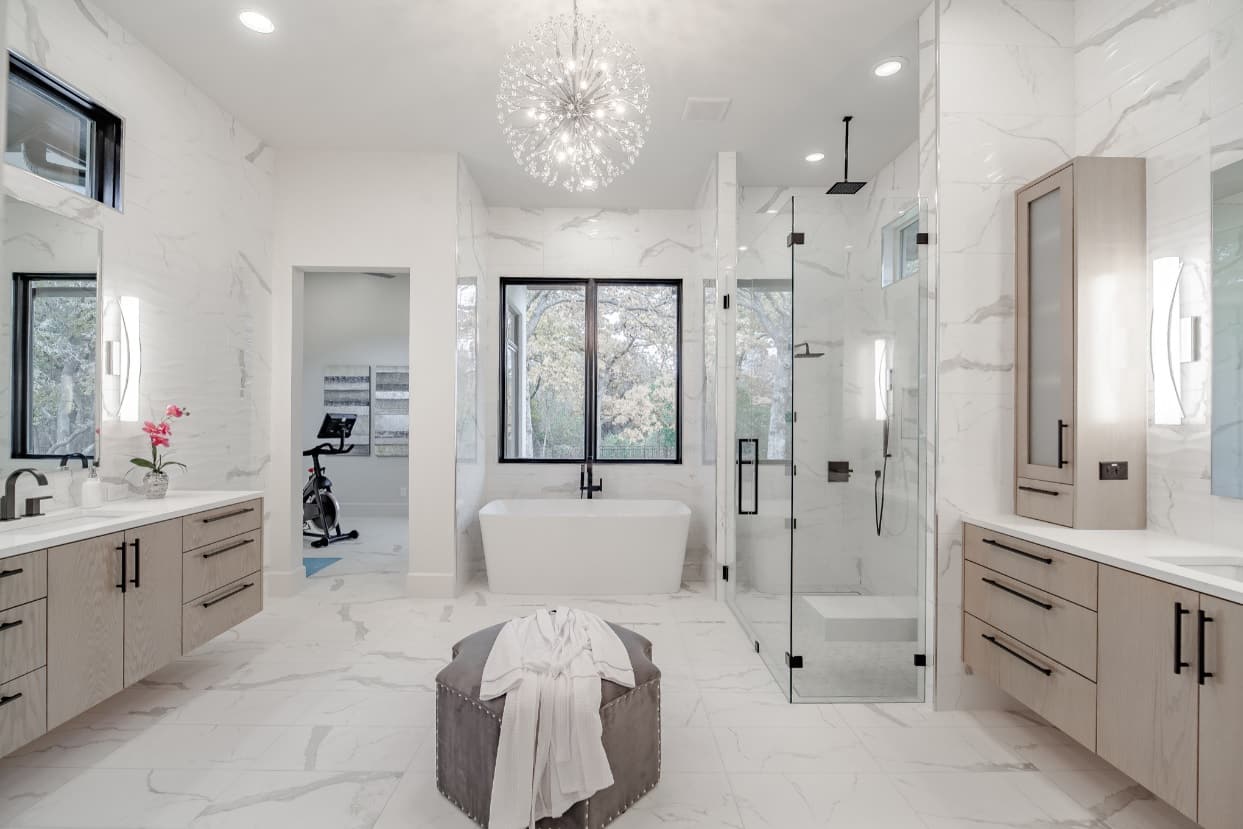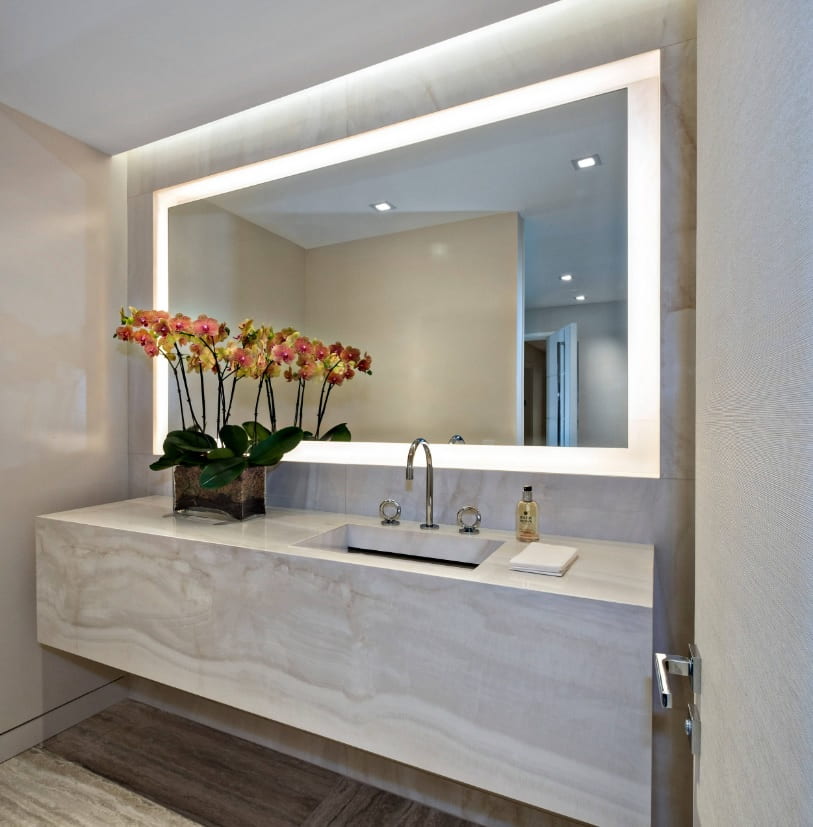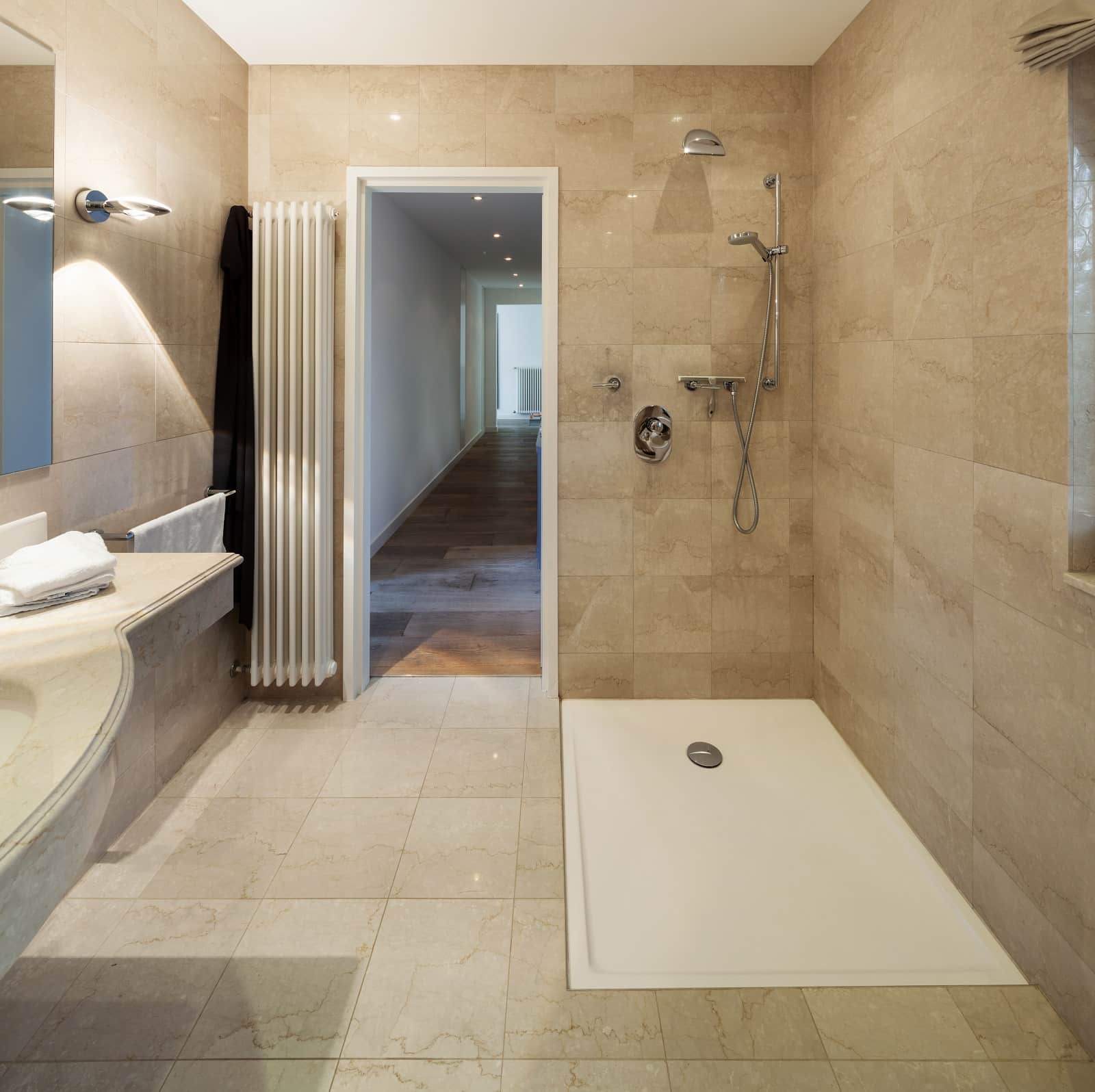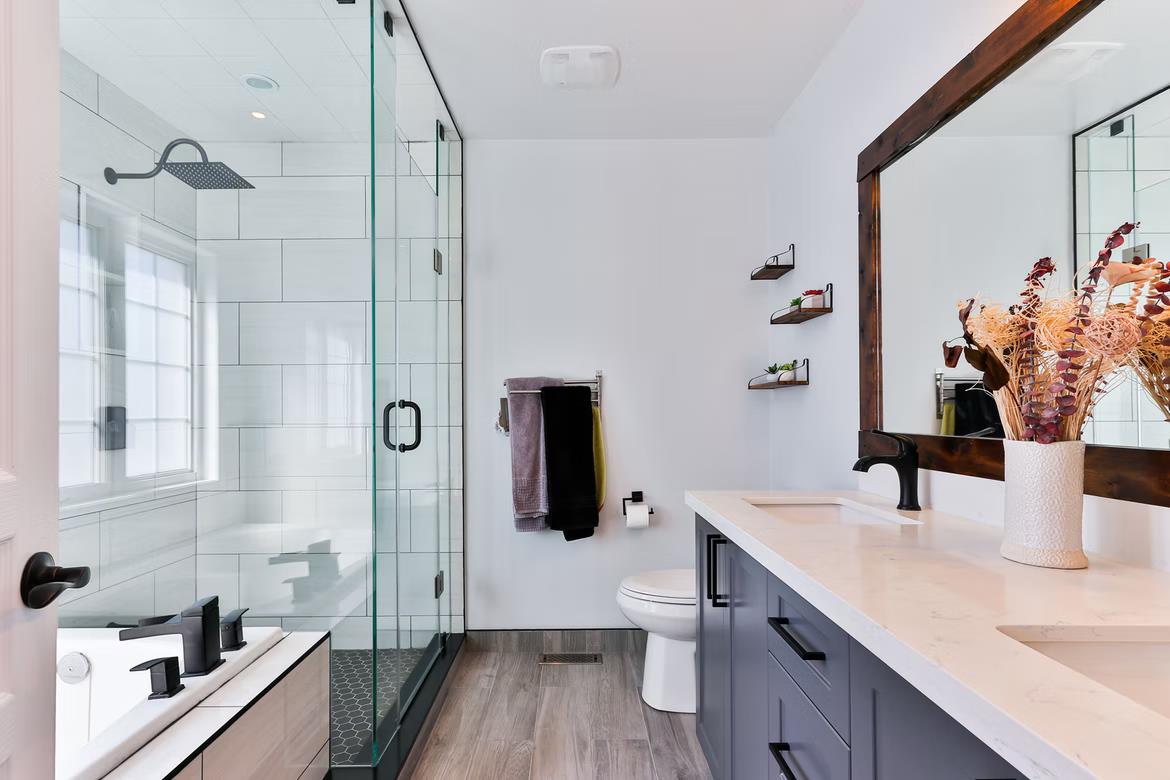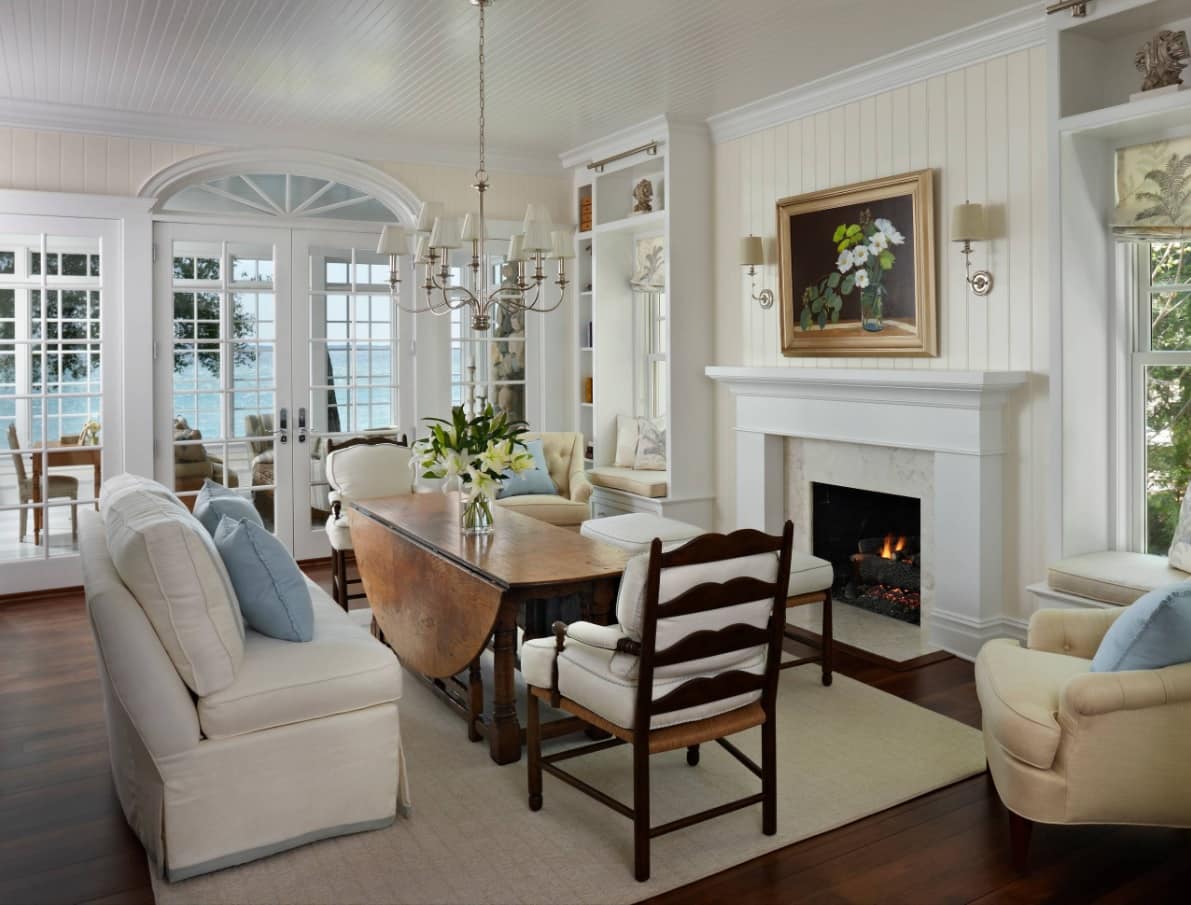The modern bathroom is not just a room with beautiful finishing, where we can take a warm bath after a hard day’s work or refresh ourselves in the shower after a morning run. First of all, it is a multifunctional room, which is regularly exposed to sharp temperature fluctuations and high humidity. Therefore, when arranging the interior of the bathroom, you should first of all pay attention to choosing high-quality materials that will fully comply with the character of the room and of course, look attractive. The most popular solution today is tile. Read on to know more about different types of bathroom tile and how you can choose the option given the style of the bathroom.
Contents:
- Advantages and disadvantages
- Ceramic tile
- Tiles with mosaic elements
- Tiles from ceramic granite
- Glass tile
- Methods of tile laying
- Choosing a style
- Using ideas
Finishing Bathroom with Tile: Advantages and Disadvantages
Like any other finishing material, tile is characterized by the presence of pros and cons, of which you should definitely be aware. The positive qualities of tiles include:
- long life with proper care;
- practicality in use;
- fairly wide range of assortment, which allows you to easily pick up the material under any style direction.
As for the disadvantages of tiles, in this list, we determined:
- considerable cost compared with the prices of other types of facing materials;
- time-consuming installation;
- requiring a certain knowledge and experience;
- the ability of joints between tiles to lose their initial appearance over time without proper care and regular cleaning.
Ceramic Tile
This kind of tile is a rectangular plate of fired clay which is considered the most common option. Often, this finishing material we conventionally call a tile. Ceramic tile has extremely low electrical conductivity, it is fireproof, fire-resistant, and is not destroyed when exposed to its surface by various chemicals. Has a wide range and reasonable cost.
Mosaic Tiles for the Bathroom
The very definition of “mosaic” means the art of creating various ornaments and drawings from small multi-colored parts, which are called “chips”. In our case, we are talking about a mosaic of ceramic tiles, as a type of one of the finishing materials for the bathroom. The mosaic in the interior of the bathroom can be used independently and can be combined with other types of cladding. Moreover, contrasting shades of mosaic will help to draw attention to certain areas in the bathroom, and monochrome materials will visually make the room appear larger.
The main advantage of mosaics is the possibility of using it as facing accessories, for example, to trim the edge of the mirror or sink of irregular shape.
Porcelain Tile
As the structure of ceramic granite consists of coal and montmorillonite clay, granite crumb, feldspar, quartz sand, and mineral pigments, it is considered one of the most durable artificial stones, which is used by designers for facing bathrooms. Porcelain tiles are highly worn and tear-resistant and are non-electric, and come in matte, polished, and semi-polished finishes. Can have a different design and is used, as a rule, for facing a floor.
Glass Tiles for Bathroom Interiors
Another original and very beautiful option is the tile of glass, which has no less impressive characteristics and perfectly reflects light. Glass tiles in the bathroom interior can be transparent, colored, or have patterns. It miraculously transforms the design of the room, refreshes the room, and fills it with coolness.
Methods of Laying Tiles
Depending on the desired result, the bathroom tile can be laid on the surfaces in different ways. The classic variant involves laying the parts exactly at the joint, horizontally. The option with an offset is the laying of tiles in even and odd rows in such a way that the upper rows of tiles will always be in the middle of the subsequent element. In other words, you should end up with an imitation of brickwork. In the rhombic method, the square tiles are rotated by 90° during masonry, forming diagonal joints between the fragments. The herringbone pattern involves the arrangement of tiles on surfaces similar to a parquet floor. The modular type of laying is characterized by using tiles of different sizes in the design.
Choosing a Style with Regard to the Interior Style Direction
Since modern tiles are pleasantly surprising with their variety of sizes, shapes, textures, and shades, they can be used to equip the interior of the bathroom in any style. For modern style, for example, the presence of finishing materials of bright colors and a combination of contrasts are important. Provençal monochrome tiles in pastel colors or with small vegetal patterns are perfect for this style. Classics accept tiling in aged and calm tones, which will perfectly match the wooden details. The bathroom in the art deco style means is gray tiles with uncomplicated patterns. Bathroom decoration in the Scandinavian style will be in harmony with tiles in light colors with small ornaments.
Tiles in the Bathroom – Ideas for Use
By applying a little imagination will any, even the most modest and unimpressive interior, become more interesting and expressive. To transform the bathroom a little, for example, you can use a combination of several types of tiles. An excellent solution for emphasizing attention would be tiles with photographic prints. With the help of mosaics, you can indicate some boundaries separating materials of different colors or textures from each other. Backlit niches with the different decoration color or texture of the external and the inner surfaces look very beautiful in the interior of the bathroom.
Do you still doubt the necessity to cover the bathroom with tiles? We assure you that it is in vain. This is the case when the price fully corresponds to the quality. As for the care of the seams between the parts, these days there are many special products, regular use of which will avoid problems related to the appearance of mold and various types of dirt.

